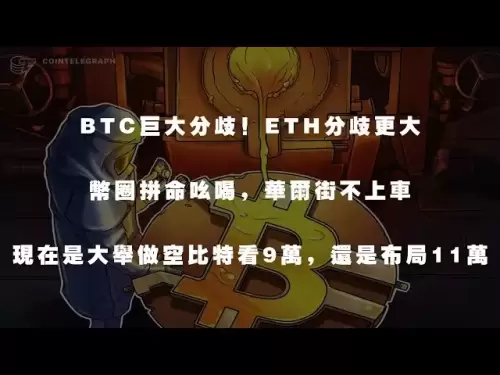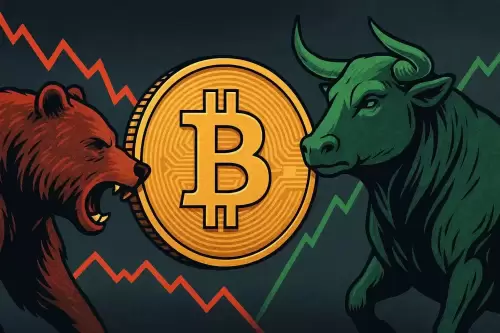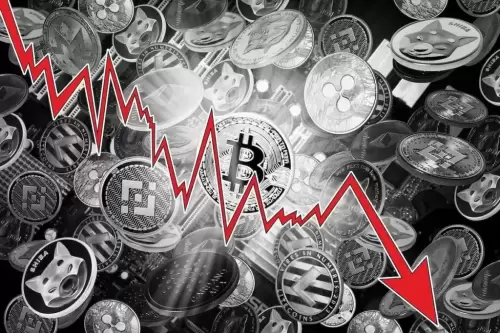 |
|
 |
|
 |
|
 |
|
 |
|
 |
|
 |
|
 |
|
 |
|
 |
|
 |
|
 |
|
 |
|
 |
|
 |
|
Cryptocurrency News Articles
This upcoming Dogecoin level could prove to be a resistance wall based on the investor cost basis distribution.
May 15, 2025 at 08:30 am
A Large Amount Of Dogecoin Was Last Purchased At $0.36

On-chain data suggests this upcoming Dogecoin level could prove to be a resistance wall based on the investor cost basis distribution.
In a recent post on X, analyst Ali Martinez has discussed Dogecoin levels that appear relevant based on the UTXO Realized Price Distribution (URPD) of the memecoin. The “URPD” is an on-chain indicator that essentially tells us how much of the asset’s supply was last purchased at which price levels. The metric determines this cost basis for each token by examining its transaction history to identify its last transfer price.
The analyst shared the following chart, which showcases the latest URPD data for Dogecoin.
As visible in the above graph, there are no levels immediately close to the current Dogecoin price that concentrate the break-even mark of a considerable portion of the supply. The nearest level of interest in the URPD is around $0.21, where 7.5% of the DOGE supply's last purchase price is clustered. In the upward direction, there aren’t any notable cost basis centers until reaching $0.36, at which point investors last bought approximately 3.8% of all tokens in circulation.
Now, the question is, what is the implication of these levels for Dogecoin? To comprehend this, we need to consider investor psychology. Naturally, each holder's cost basis is a significant level to them, and they tend to show some reaction when a retest of this point occurs.
However, if only a few investors are reacting, it won't influence the cryptocurrency significantly. But for retests of levels that hold the cost basis for a large amount of holders, the story can be different. The aforementioned levels could be viewed as major ones from this perspective.
Generally, investors tend to react by buying if the retest is happening from above, assuming the mood in the market is bullish. This is because these holders, who were in profit prior to the retest, might view the price decline as just a ‘dip.’
On the other hand, the holders who were in loss before the retest may decide to sell their Dogecoin, as they could fear that this might be their last opportunity to exit at their break-even for a while.
As such, major supply walls below the DOGE spot price can act as potential support zones, while those above it may prove to be resistance areas. Given that the closest two such levels are at $0.21 and $0.36 for the asset right now, they may be where the coin could be the most probable to encounter strong support and resistance, respectively.
DOGE Price
At the time of writing, Dogecoin is trading at $0.237, showing a gain of more than 37% in the last seven days.
Disclaimer:info@kdj.com
The information provided is not trading advice. kdj.com does not assume any responsibility for any investments made based on the information provided in this article. Cryptocurrencies are highly volatile and it is highly recommended that you invest with caution after thorough research!
If you believe that the content used on this website infringes your copyright, please contact us immediately (info@kdj.com) and we will delete it promptly.
-

-

-

-

-

-

-

- Tether Unveils QVAC: Privacy-Focused AI Platform
- May 15, 2025 at 03:45 pm
- Tether, known globally for its stablecoin USDT, has made a bold entry into the world of artificial intelligence with the launch of QVAC—a cutting-edge development platform designed for building privacy-focused AI applications.
-

-
























![[Ronnie Trading Guide]-2025.5.15-Bitcoin continues to consolidate at a high level, and only patient investors will get a return on time~ [Ronnie Trading Guide]-2025.5.15-Bitcoin continues to consolidate at a high level, and only patient investors will get a return on time~](/uploads/2025/05/15/cryptocurrencies-news/videos/ronnie-trading-guidebitcoin-continues-consolidate-level-patient-investors-return-time/682574fd46a42_image_500_375.webp)





































